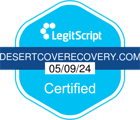
Additionally, doctors are also charged with treating addicts who are seeking help for their substance abuse problems. Because of this two-fold interaction with the prescription painkiller problem, the American Society of Addiction Medicine (ASAM) gathered doctors from around the country to develop better policies for dealing with the painkiller epidemic.
The first problem that the group encountered was the insufficient training in addiction medicine for most doctors. While most physicians certainly understand the basic fundamentals of addiction, the nuances of treating this disease is considered a specialized form of medicine.
Doctors who are not familiar with addiction treatments often do not prescribe medication designed to help with drug withdrawals and detox, such as buprenorphine. While studies show that monitored use of drug replacement medications illicit better results in treatment, many doctors still consider this is replacing one dependency for another when used indefinitely. Suboxone is one of the most popular medications given to patients with a heroin or prescription painkiller addiction, ad currently only doctors who meet certain criteria are allowed to prescribe the medication.
Another problem that was discussed during the meeting was the lack of treatment facilities. Currently, state-run facilities oftentimes run at capacity, while private treatment centers are struggling to keep up with the demand. Doctors can contribute to the treatment problem by encouraging addicts to seek treatment, helping them locate appropriate treatment and staying up to date with the changing methods of treating addicts.
“We just don’t have enough specialty treatment facilities and expertise in this country to treat everyone. That’s why we need guidelines like this as part of a larger movement to help integrate treatment into general practice,” explained Christopher Jones from the Department of Health and Human Services.
These new guidelines are scheduled to be included in the new ASAM’s National Practice Guideline and will also be included in the CDC’s Guideline for Prescribing Opioids for Chronic Pain coming out in the near future.


